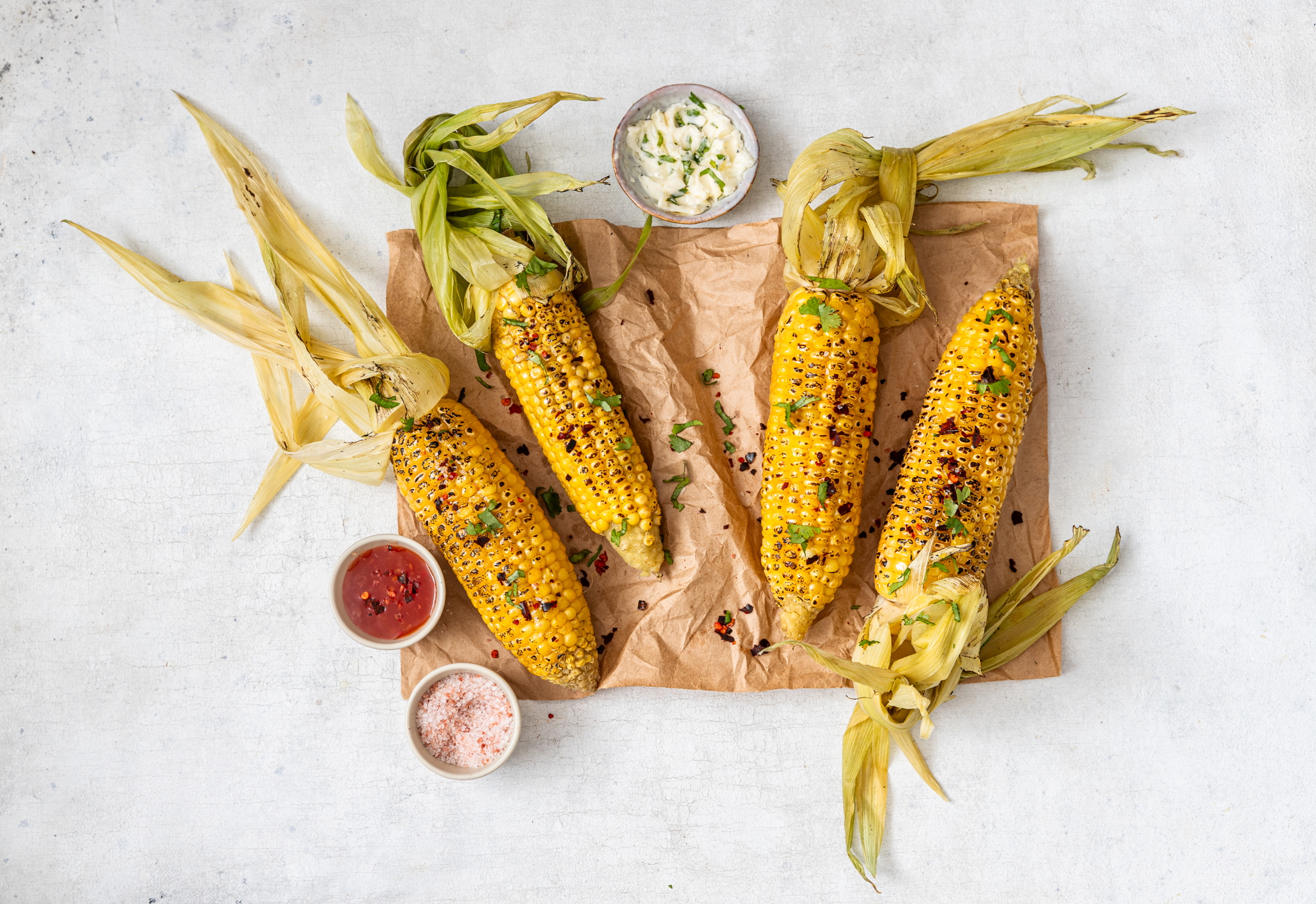'Handheld heaven: Tom Parker Bowles on the 'baroque symphony' of spicy, sublime Mexican corn
Hot and cool, sharp and sweet, spicy and sublime, Mexican corn on the cob is peerless — but the golden kernels must never, ever be allowed near a pizza.


It's the smell that grabs you first, softly vegetal with a thick edge of char. Cutting through the fag smoke and diesel fumes, the scent of warm tortillas and faint whiff of drain, it draws one, unthinkingly, towards the elotero, selling elotes (or corn on the cob) from a stall or cart.
But this is no mere butter-smeared bite, rather a baroque symphony of the hot and the cool, the sharp and sweet, the spicy and the sublime. Found all across Mexico, this humble ear, boiled as well as grilled, is transformed into pure handheld heaven.
First, the base is pierced with a wooden stick, for ease of eating, before being slicked in mayonnaise, doused in lime juice, sprinkled with chilli powder and slathered in a variety of hot sauces and salsas before one final coating of grated queso fresco.
You can have all of the above, some or none at all. Seasoning is very much to taste. The whole process takes no more than 10 seconds, yet is mesmerising in its elegant execution. Esquites is the other option, corn without the cob and equally exalted. See the recipe below.
Cooked in butter and chilli, the kernels are ladled into polystyrene cups and anointed with the usual triumvirate of lime, chilli and cheese, together with a splodge of sour cream and even the occasional fistful of chapulines (or grasshoppers) for extra crunch: muy, muy bueno.
'Nowhere in the world reveres sweetcorn like Mexico. Maize is at the heart of this magnificent cuisine'
Because nowhere in the world reveres sweet-corn like Mexico. This is hardly surprising, as maize — of which sweetcorn is an especially sweet variety, eaten fresh and unripe — is at the very heart of this magnificent cuisine, a crop cultivated in both North and South America for at least 3,000 years.
Other varieties are ground, then mixed with slaked lime to create masa dough, from which tortillas are pressed and tamales stuffed — but that’s a whole different mouthful. Exactly like polenta in Italy or grits in the US — also made from ground maize, which are adored and abhorred in equal measure.
Exquisite houses, the beauty of Nature, and how to get the most from your life, straight to your inbox.
In the majority of mainland Europe, however, sweetcorn is rather less revered. I once heard the story of an American who moved to the south of France and planted his own sweetcorn. The crop flourished and, come harvest time, he picked his cobs and took a stall at the local market, where the French studied his bounty with furrowed brow. ‘But this is food for geese,’ they said, perplexed. And left, shaking their heads.
The rest of the world is rather more appreciative. The Americans, who grow half of the world’s crop, transform it into all manner of chowders, creams and succotash (a Native American dish of corn, beans and other vegetables).
Grilled cobs are ubiquitous in street markets across Africa, the Americas and Asia, too — each country and culture adding its own spice and flourish. In Peru, sweetcorn is known as choclo and the kernels — which are rather larger than usual, with a markedly more chewy texture — are served with ceviche or deep-fried as beer snacks.
Like peas and asparagus, sweetcorn is at its best cooked moments after picking, as all those lovely sugars turn quickly to starch. But although the vast majority of supermarket specimens look the part — bright, fecund and buxom — they promise somewhat more than they deliver.
If you can buy them in their husks, all the better. Soak them in cold water for 20 minutes, before stripping off all those silken strands and wrapping them back up again. Cook over hot coals and they’ll steam inside their husks. If you’re after more colour, remove the leaves and grill direct — both are equally fine.
One thing that is not and never will be fine is sweetcorn on pizza. That will always be very, very wrong.
Tom Parker Bowles's new book, 'Cooking and the Crown: Royal recipes from Queen Victoria to King Charles III', is out now.
Recipe: Esquites
This recipe comes from Mark Diacono’s typically excellent new book, Vegetables. Feel free to fiddle with the spice and seasoning to taste. If peppers aren’t your thing, simply leave them out.
Ingredients
- 8 small corn tortillas (or use wheat tortillas)
- 2tspn butter
- 1 red onion, thinly sliced
- 400g (14oz) fresh corn kernels (about 4–5 ears of corn)
- 1 jar of roasted red or yellow (bell) peppers, torn into long strips
- 60g (2¼oz) mayonnaise
- 60g (2¼oz) sour cream
- 1 garlic clove, finely chopped
- Juice of 1 lime, plus another lime cut into wedges to serve
- ½–2tspn chipotle flakes, to taste
- 200g (7oz) feta cheese (or Cotija cheese), crumbled
- Bunch of coriander, finely chopped
- Sea salt and freshly ground black pepper
Method
Preheat the oven to 180˚C/160˚C fan/350˚F/gas mark 4.
Place a wire rack over a baking sheet and lay out the tortillas in a single layer. Toast in the oven for 5–8 minutes, until crisp. Alternatively, fry in batches in olive oil in a frying pan until crisp.
Melt the butter in a large frying pan over a low-medium heat and sauté the onion for 7–10 minutes until soft, then add the corn kernels and peppers and cook over a high heat, stirring occasionally, for about 5–6 minutes, until the corn is tender and lightly browned. Remove from the heat, allow to cool slightly and season with salt and pepper.
In a small bowl, combine the mayonnaise, sour cream, garlic, lime juice and chipotle. Stir half of this through the corn mixture.
Spread the corn and peppers on top of the tortillas. Drizzle with the remaining dressing and top with the cheese and coriander, with lime wedges on the side.
Tom Parker Bowles is food writer, critic and regular contributor to Country Life.
